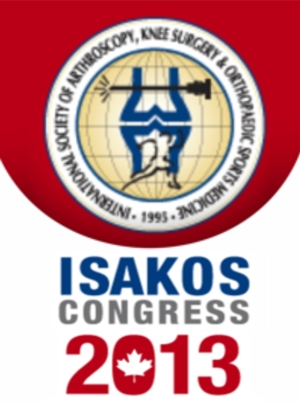
ISAKOS: Similar DASH but better healing in large tears with microfracture in RC repair

ISAKOS: Similar DASH but better healing in large tears with microfracture in RC repair
Efficacy of marrow-stimulating technique in arthroscopic rotator cuff repair: a prospective randomized study
CONFERENCE ACE REPORTS
This ACE Report is a summary of a conference presentation or abstract. The information provided has limited the ability to provide an accurate assessment of the risk of bias or the overall quality. Please interpret the results with caution as trials may be in progress and select results may have been presented.
Synopsis
80 patients suffering from a tear in their rotator cuff were randomized to receive either standard tendon repair or tendon repair involving microfractures of the greater tuberosity (a marrow-stimulating technique). Results indicated similar Disability of the Arm, Shoulder and Hand (DASH) scores at a mean follow-up of 28.1 +/- 3 months and similar tendon healing (or structural integrity) at 1 year ...
To view the full content, login to your account,
or start your 30-day FREE Trial today.
FREE TRIAL
LOGIN
Forgot Password?
Explore some of our unlocked ACE Reports below!

Learn about our AI Driven
High Impact Search Feature
Our AI driven High Impact metric calculates the impact an article will have by considering both the publishing journal and the content of the article itself. Built using the latest advances in natural language processing, OE High Impact predicts an article’s future number of citations better than impact factor alone.
Continue



 LOGIN
LOGIN

Join the Conversation
Please Login or Join to leave comments.